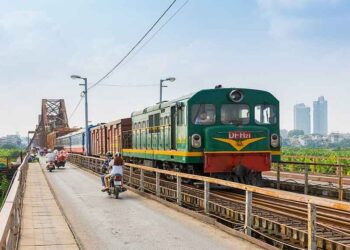The Luzhou Line is a fully underground high capacity mass rapid transit line in New Taipei City, Taiwan (Republic of China). It measures 6.4km long excluding the section leading to the depot from Luzhou Station.
The line connects Taipei City with the Luzhou and Sanchong districts in New Taipei City which are situated on the west side of Danshui River. It is operated by Taipei Rapid Transit Corporation.
The implementation of Taipei mass rapid transit is divided into three stages. Luzhou Line, part of Stage I, is one section of the 31.5km long Orange Line. The line was opened in November 2010, after an eight year construction period. It has increased the total length of the Taipei mass rapid transit system to 106.4km.
Except for construction of the Wanda Line and the Xinyi Eastern Extension was approved in February 2011, the remainder of approved routes in Stage II are currently under construction, totalling 60.3km. Stage III is routes planned for future expansion.
The Luzhou Line provides fast, convenient, comfortable and a reliable commuter train service to the population of Luzhou and Sanchong districts in New Taipei City. It has considerably reduced traffic congestion that occurred during peak hours at Chongyang Bridge, Taipei Bridge, Zhongxiao Bridge, Zhongxin Bridge and Zhongshan Freeway. Commuters traverse this route to move in and out of down-town Taipei, which is the central business centre.
Line and routes
The Orange Line is divided into three sections: the aforementioned Luzhou Line, the 5.4km Zhonge Line and the 19.7km Xinzhuang Line. The Zhonghe Line was opened in December 1998. The Xinzhuang Line was partially opened in November 2010 and the remainder of the line is expected to be commissioned by section in 2012 and 2014.
The Luzhou Line begins at the intersection of Sanhe Road and Huanhe N. Road, situated on the north-west side of Taipei Bridge. After joining the Xinzhuang Line, it turns north-west and runs along Sanhe Road in Sanchong District and Zhongshan 1st Road and Sanmin Road in Luzhou District, New Taipei City.
The Orange Line intersects with the Danshui Line (Red Line) at Minquan W. Road Station, the Nangang Line (Blue Line) at Zhongxiao Xinsheng Station, and the Xindian Line (Green Line) at Guting Station.
It will also intersect with the future Songshan Line (Green Line) at Songjiang Nanjing Station and with the Xinyi Line at Dongmen Station. The Songshan and Xinyi lines form part of the Taipei mass rapid transit Stage II.
The line terminates at Luzhou Depot in New Taipei City.
Infrastructure
There are five stations and a maintenance depot on the Luzhou Line. Trains stop at the Sanchong Elementary School Station, Sanhe Junior High School Station, St Ignatius High School Station, Sanmin Senior High School Station and Luzhou Station.
All the stations are designed and painted on the theme of egrets with different actions such as spreading winds, playing in water, hovering over a sandbank, etc.
Stations are built underground with island platforms; each with different length and width. There is a difference in the number of exits as well.
Sanchong Elementary School Station is 153m long. It has one exit, one emergency gate and two ventilation shafts. An elevator for physically challenged passengers has been installed at the exit gate.
Sanhe Junior High School Station is 214m long. The station has two exits, one emergency exit, two ventilation shafts and one elevator at for physically challenged passengers.
St Ignatius High School Station is 151m long. The station also has two exits, an elevator, and situated at Exit B. It has one emergency exit and two ventilation shafts.
Sanmin Senior High School Station is 193m in length and 22m in width, and shares facilities similar to those at St. Ignatius High School Station.
Luzhou Station measures 216m long and 21m wide. It has three exits, one with an elevator for physically challenged passengers.
The Luzhou maintenance depot is located between Shuinan Ditch and Huanhe Road in the northern part of Luzhou District in New Taipei City. It is a grade-four designated maintenance depot, and houses a stabling yard, a maintenance plant, a track plant, train cleaning yard, an administration and training centre, and a sewage treatment plant.
Construction
Stations and the turnout sections were constructed using the cut-and-cover method while the sections between two stations were built using shield tunnelling method.
Due to unavailability of land and narrowness of the streets above ground, the underground tunnel from the Danshui River to Sanchong Elementary School Station was constructed using hydro-pressure anchor caisson method. It is the first case of caisson construction in the nation. Two tunnels were stacked one on top of the other in this section to avoid disruption to the residents.
Rolling stock
The rolling stock for the system consists of six-car train electric multiple units. Each train-set has 352 seats and standing space for 1,584 people.
































